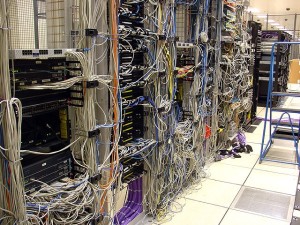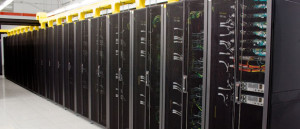Data Centers Guidelines

Hey folks! How you doing?
Nowadays Data Centers have evolved into critical blocs of enterprises. As they must be 24/7 available, it is an obligation that they are a basic pilar of the company. Because... how many of you would be client of a bank which's network is always going down?
As Data Centers are fundamental areas of their business, I am going to list the key factors that provide a healthy and strong Data Center:
- Good Data Center Planning: This could be the main point of the whole structure. Is my data center dimensioned to meet my user requirements? Will I have enough computational power to process all queries of my customers? Will it be easy for me to add more equipment in case of necessity? Answering to those questions correctly can earn much time and the most important: much money, which, in the end, is what really matters.
- Correct physical location: by physical location I mean both geographical location and physical location in a room. Geographycal location can make some substancial variations in costs. For example, having the data center in Sweden, or Greenland or whichever northern region, can reduce temperature costs rather than having the data center in the Sahara Desert (as an extremism) which would make those costs insane. Besides, placing the data center in physical location in a room or building rather than another, can make some differences as well. Having a data center in a basement, can be more secure than having it in the penthouse (within much other characteristics). Also, having room and extra installations for future equipment can be a good idea, so expanding the data center does not turn into a nightmare. This fact is not always fulfilled as having empty room turns into economic loss.
- Enough LAN parameters: LAN parameters are also a big deal, as not having a proper LAN design can lead into bottlenecks or network failure. For that reason, having well ordered cabling structures, or not-so-long switch to switch connections, can also result into faster troubleshooting if necessary. Also mobility is a key point, so having good rack to rack distance is vital (which can also improve ventilation as well). An important factor to take into account too, is the air conditioning. This part is basic, as device overheating can turn into power loss or low performance. To counteract this point, both previously locations are primal, as well as having powerful fans cooling the equipment.
- Availability Specifications: most of nowadays companies have a great part of their business in the internet. So, they cannot afford having network faults. Consequently, they need to have redundant equipment to take over the ones that fail, so that the data is always available. Most of the big companies invest in redundant equipment because they have experience in node failings, but newer enterprises may dispense with that equipment, as they see it as money stagnation.
- Storage and Backup: Data storage is the main goal of data centers. Without it, data centers turn into nothing. So storage resiliency is fundamental, as well as access velocity to the disk. As storage is that important, having data backups is fundamental.
- Governmental Law Fulfillment: This, in order to accomplish the rules of a country, and not to trick its jurisdiction, and to fall into unfair competition.
- Electrical Power specifications: another point to take a look at. You will agree with us that, having the best powerful equipment will not help if the electrical bill is huge, don't you? So saving in electrical power can be as important as the device itself.
- Fire Protection: Having a good fire protection is deciding, too, as the bast majority of enterprises regulates internal security best practices.
- Security: when we talk about security we have to do it in both physical and virtual ways. Physical security refers to those lockers where the equipment should be locked into (also called locked racks). This is an important fact, as having restricted access to network devices is crucial for evading internal attacks or undesired data center visitors. On the other hand, we have virtual security, by which an attacker could access our services taking advantage of security flaws or vulnerabilities. Hence, having an up to date antivirus, or a IDS (Intrusion Detecting System), within others, should be must.
Images below will show you two different examples of poorly and well done designs of data centers, respectively.
We need to avoid this kind of assembly.
All the points discussed above are correctly used.
Hope this post has been interesting for you. See you!


Add new comment